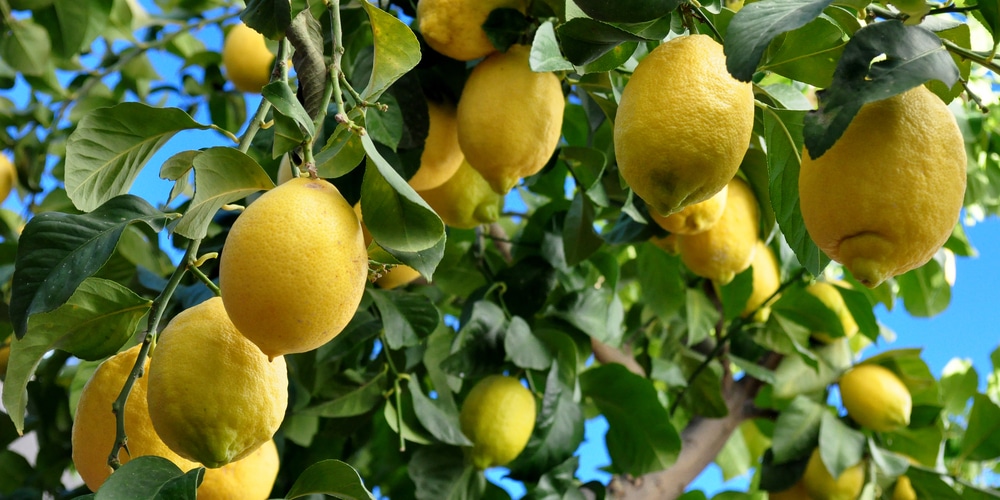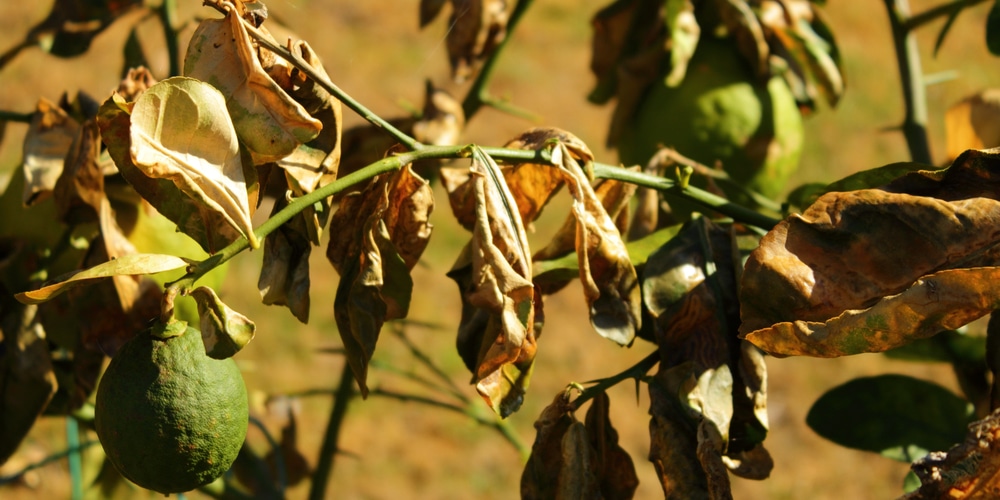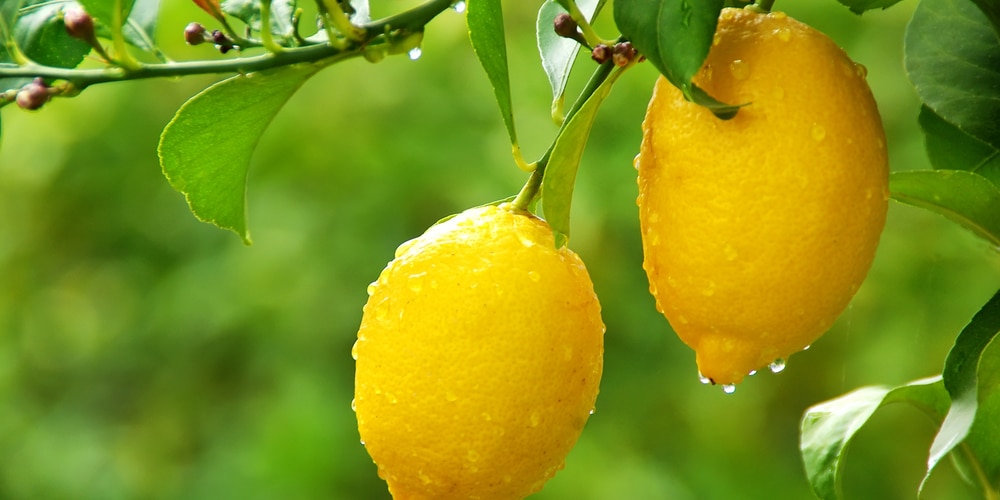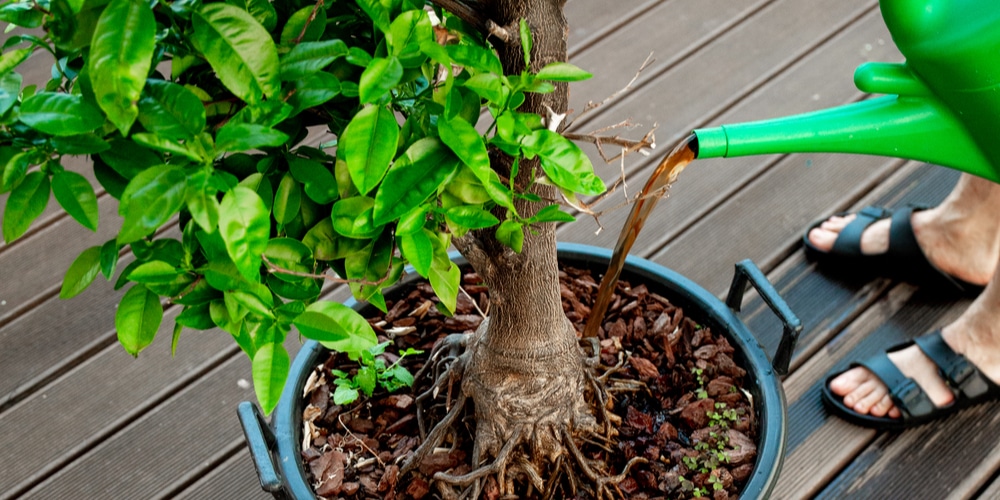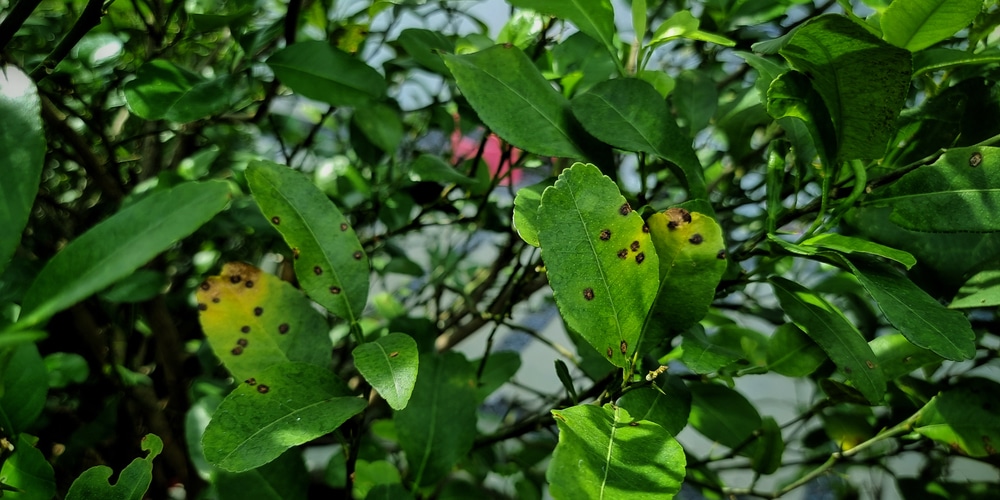Lemon trees have beautiful glossy green leaves and produce white blossoms in the spring, which develop into lemons. If your lemon tree has started to drop its leaves, you should figure out what the problem is and take steps to improve the health of your trees.
Lemon trees can drop their leaves due to seasonal changes, pests’ infestations, disease, or infections. When a tree doesn’t have enough leaves to absorb sunlight, it will start to suffer and will eventually die. Leaves are a vital part of the photosynthesis process. Let’s look at what to do if your lemon tree dropped all leaves.
Why is my lemon tree dropping leaves?
Many things can cause a lemon tree to drop its leaves. As Lemon trees are evergreen, they don’t change color or drop all their leaves in the fall. However, they are not totally immune to seasonal leaf drop. Lemon trees will drop some leaves during the winter or the early spring. They drop leaves at this time to make space for new growth.
Although lemon trees do drop their leaves, they should never end up looking sparse. A tree that has dropped almost all its leaves has a problem. Here are the common reasons for a lemon tree dropping leaves:
Cold damage
As lemons are citrus trees, they thrive in sunny climates and don’t like cold weather. A lemon tree may drop its leaves if the temperature falls below freezing. There are hardier lemon varieties, but if your lemon tree is dropping its leaves in the winter, cold damage is the most likely cause.
If the temperature falls to below 28 degrees F. for at least four hours, your lemon tree will be affected and will likely start dropping its leaves. It’s a wise idea to protect your lemon trees by covering them or moving them to a greenhouse if the temperature gets down to degrees F.
Overwatering
Another common reason that lemon trees drop their leaves is due to overwatering. If the tree roots become waterlogged, they may develop root rot, which means the plant won’t be able to absorb enough water and nutrients from the soil. This will cause the tree’s health to decrease, and its leaves will fall off.
To avoid overwatering, lemon trees should be planted in well-drained soil. You can also mulch around the base of the tree and plant your trees on a three to four-foot-high raised bed. This will allow any excess water to run away from the tree.
If your lemon tree is suffering from root rot, you can also reduce irrigation. It’s best to test the soil’s moisture with your finger before watering. Only irrigate your lemon tree once the upper six inches of the topsoil have dried out. If you have a larger citrus orchard, you may like to install a drip system to water your trees slowly.
If your tree is starting to die, it may have a severely damaged root system. You could try removing the damaged roots and then replace them with a Phytophthora-resistant rootstock. Rootstock options that can be used for lemon trees include ‘Cleopatra’ mandarin, Rough lemon, Sour orange, or ‘Carrizo’ citrange. Carefully dig up your tree and remove infected roots, then treat the soil with an organic fungicide so that the root rot doesn’t spread to the new rootstock.
Lack of Nutrients
Lemon trees require sixteen different nutrients to thrive. A depletion of just a single nutrient can cause your tree’s leaves to turn yellow and then drop off. Nutrients such as nitrogen, iron, magnesium, manganese, and zinc are all vital for lemon trees. Deficiencies in these nutrients will not only cause leaf drop but will also mean that your tree will produce less fruit or smaller fruits.
To keep your lemon trees healthy, you should provide them with fertilizer every six weeks to two months throughout the growing season. It’s particularly important to fertilize lemon trees that are less than seven years old. You can buy a fertilizer that has been specifically formulated for citrus trees.
Lemon Leaf Diseases
Sometimes when a lemon tree is suffering from a leaf disease, it will have yellowing leaves. Fungal infections and diseases can cause your lemon tree to dieback, and defoliate. Common leaf diseases that affect lemon trees include Alternaria leaf spot and greasy spot.
Alternaria leaf spot
Alternaria leaf spot can cause lemon tree leaves to turn yellow. When this disease is present, you’ll also notice that the tree’s foliage has veins that have blackened. The fruit is also affected and will have brown or black spots that have a yellow halo. This will eventually cause the fruit to drop.
To avoid Alternaria leaf spot, you can plant a disease-resistant variety of lemon. It’s also beneficial to plant your tree well-spaced out so that the disease doesn’t spread as easily.
If you have a lemon tree that’s suffering from Alternaria leaf spot, you can use a Copper fungicide spray on the leaves in the spring and summer. The treatment will need to be reapplied every four weeks from April to June.
Greasy spot fungus
Another fungus that commonly affects lemon trees is greasy spot fungus. These sores start off as a yellow spot that develops on the top of the leaves. In time a brown blister will form, and these have a greasy appearance. Blisters can grow on the top or bottom of the leaf.
Greasy spot fungus can also be controlled using a copper fungicide. Ensure that you spray the top and bottom of the leaves. You can spray in either May or June and then again in July or August.
Conclusion
As you can see, there are many things that can cause a lemon tree to drop its leaves. If the winter has been very cold with frosty weather, this is the most likely cause. Otherwise, you can look out for fungal infections or pests and spray your trees accordingly.
It’s also a good idea to test the soil’s nutrients as a deficiency in nitrogen, iron, magnesium, manganese, or zinc can cause defoliation.
